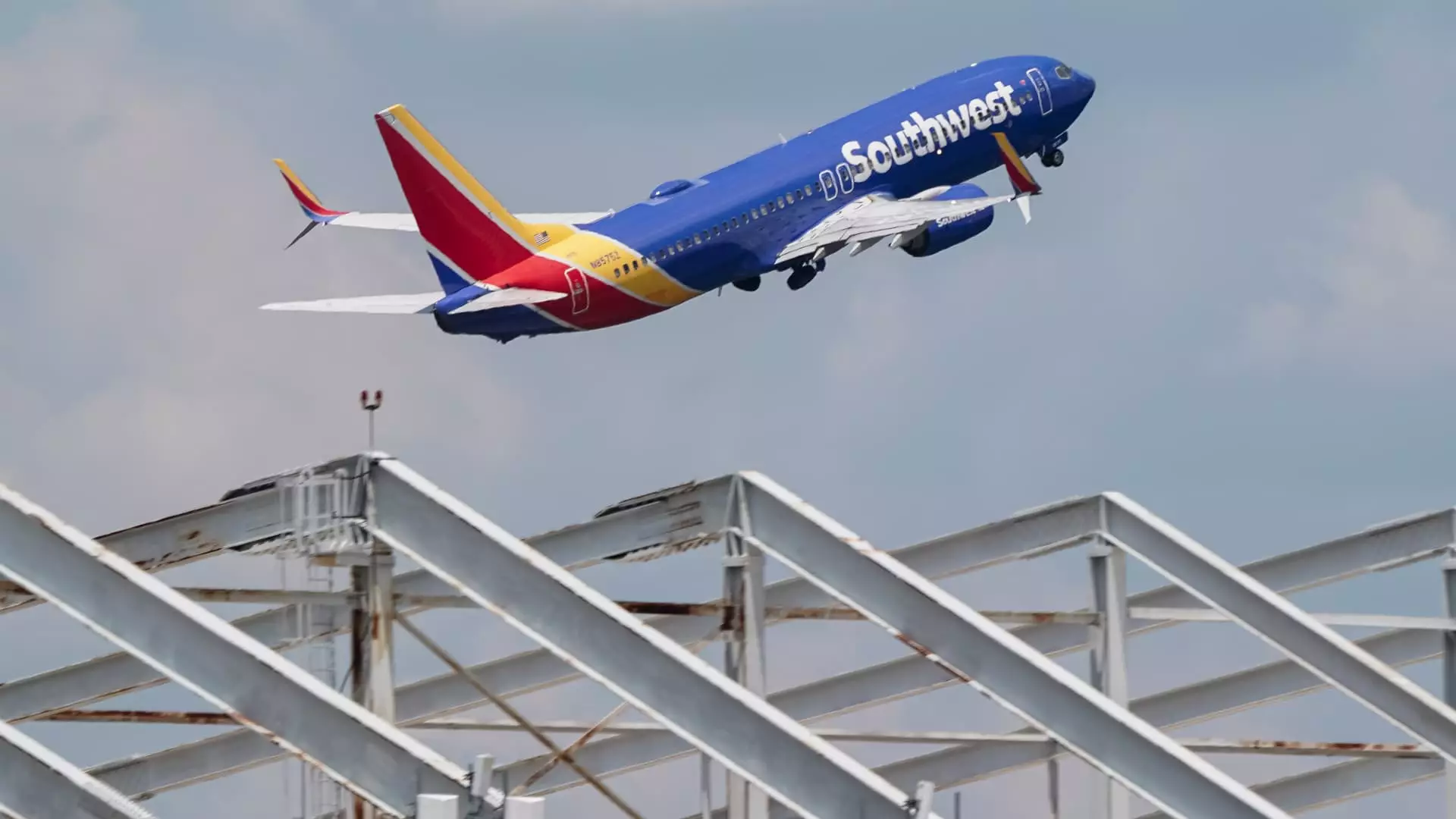Southwest Airlines has recently reported a decline in its third-quarter profits when compared to the previous year; however, the numbers have unexpectedly exceeded Wall Street’s forecasts. This outcome offers a glimmer of hope amid a challenging financial landscape. The carrier’s management, led by CEO Bob Jordan, is actively navigating through pressures to enhance revenue while simultaneously addressing the concerns posed by activist investor Elliott Investment Management, which has recently gained traction in their push for corporate changes.
In a significant move, Southwest Airlines announced a deal with Elliott Investment Management that effectively sidesteps a potentially contentious proxy fight. This agreement allows Elliott to place six candidates on Southwest’s board, a strategic compromise that reflects the growing influence of activist investors in shaping corporate policy. Significantly, this contract maintains Bob Jordan’s leadership position, allowing him to continue implementing his vision for the airline during turbulent times.
Looking ahead to the fourth quarter, Southwest Airlines anticipates an increase in unit revenue by 3.5% to 5.5%, despite experiencing a 4% reduction in flight capacity compared to the previous year. This highlights the carrier’s strategic focus on maximizing revenue per available seat mile, even if it means scaling back their operational capacity. However, it is crucial to note that the airline is bracing for a substantial cost rise, projecting increases of up to 13% in non-fuel expenses. This indicates a tightening of profit margins and a call for astute cost management in the face of rising operational expenses.
Interestingly, Southwest’s earnings report reflects a sustained demand within the leisure travel sector. The airline’s statement underscores a robust current in travel bookings, particularly as the holiday season approaches. This sustained consumer interest contrasts with the practices of some competitors, who have reduced unprofitable capacity in efforts to stabilize airfare, indicating a critical shift in market dynamics that could redefine competitive strategies.
Southwest has laid out an ambitious three-year plan designed to increase earnings significantly, projecting an additional $4 billion before interest and taxes by 2027. To bolster this financial strategy, the airline has initiated a substantial stock buyback program worth $2.5 billion and is implementing cost-saving measures, including the cessation of underperforming flights. Notably, the airline is also planning to transition from its traditional open seating model to a fee-based system for seat selection and additional legroom, marking a substantial shift in its operational approach that could redefine customer experience.
When examining performance metrics, Southwest’s third-quarter revenue reached $6.87 billion, showcasing a year-over-year increase of over 5%. In contrast, net income saw a drastic decline of 65% year-over-year to $67 million, aligning with broader market pressures on airlines. Nevertheless, the company reported adjusted net income of $89 million, or 15 cents per share, surpassing analyst expectations, which projected a break-even point. This contrast between operational revenue growth and net income decline reveals the ongoing complexities facing the airline industry.
While Southwest Airlines contends with pressing financial challenges, its forward-looking strategies and adaptation to market demands may well position it for recovery amidst an evolving aviation landscape.


Napsat komentář